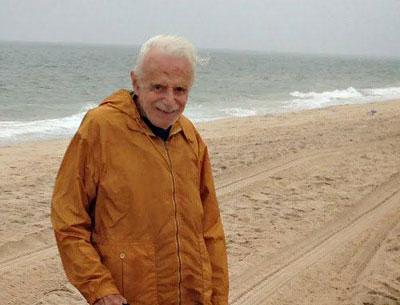Alexander Sedlis, Surgeon and Survivor

Alexander Sedlis, a distinguished cancer surgeon and professor of medicine who survived the Holocaust after escaping from a Polish ghetto, died on Feb. 17 in New York City of pancreatic cancer. He would have been 93 on May 17.
Dr. Sedlis and his wife, Emilia, who were known as Alik and Mila, had been together for 70 years when she died in 2012. They had a summer house in Sagaponack, where, his son Steven wrote, members of their extended family and friends engaged in long hours of discussion, and sometimes acrimonious debate, in English, Russian, and Polish. His father had an abiding love of Sagaponack’s potato fields, the ocean, his garden, and the sun-drenched landscape, said his son — a holdover, perhaps, from growing up in “a culture that prized the dacha, the summer home.”
Dr. Sedlis was born on May 17, 1921, to a prominent Jewish family in Wilno (Vilna), Poland. His father was an obstetrician and gynecologist who made rounds in the morning and saw patients in the family’s opulent apartment in the afternoons. That Dr. Sedlis became a physician in this country, known for the diagnosis and management of lesions of the cervix, may have been preordained.
He was taught by private tutors until he was about 10, and became an accomplished pianist as a youth. In later life, he enjoyed playing duets for piano and flute. Even in his last year of life, his family said, he continued to attend New York Philharmonic concerts and to visit the Metropolitan Museum of Art.
In 1939, he graduated from a Polish state gymnasium with the credentials for medical school, but Nazism intervened. The family was forced out of its home and into the Vilna Ghetto in 1941. Working as an orderly at the Jewish hospital there, the future doctor was among the first to see and treat survivors of the infamous slaughter of Jews in the nearby forest of Ponary. He and his wife, who were married in the ghetto, escaped shortly before its liquidation, finding safety in the countryside among sympathetic Poles and working as farmhands.
In the summer of 1944, after Poland was liberated, Dr. Sedlis was a Red Army medic for a time. When the war ended he and his wife, as well as his father, received refugee status and were able to immigrate to Italy, where he graduated from the Rome School of Medicine in 1949. They arrived in New York later that year.
Both Dr. Sedlis and his wife, also a medical student, had difficulty finding suitable work in the city but eventually obtained internships and residency at Cumberland Hospital in Brooklyn. He graduated in 1957 from the New York University School of Medicine’s postgraduate course for foreign medical graduates, and subsequently became a clinical instructor at New York Medical College; his wife became a pediatrician at N.Y.U. While still a clinical instructor, Dr. Sedlis was a visiting fellow in pathology at Harvard.
He is survived by two sons, Dr. Steven P. Sedlis and Daniel Sedlis, both of New York, and by four grandchildren. Shortly before his death, he learned that he was about to become a great-grandfather.
In writing about his father’s life, Steven Sedlis said, “His example and his values are his legacy to me and to us. I will treasure it forever and do my best to pass it on to the generations to come.”
